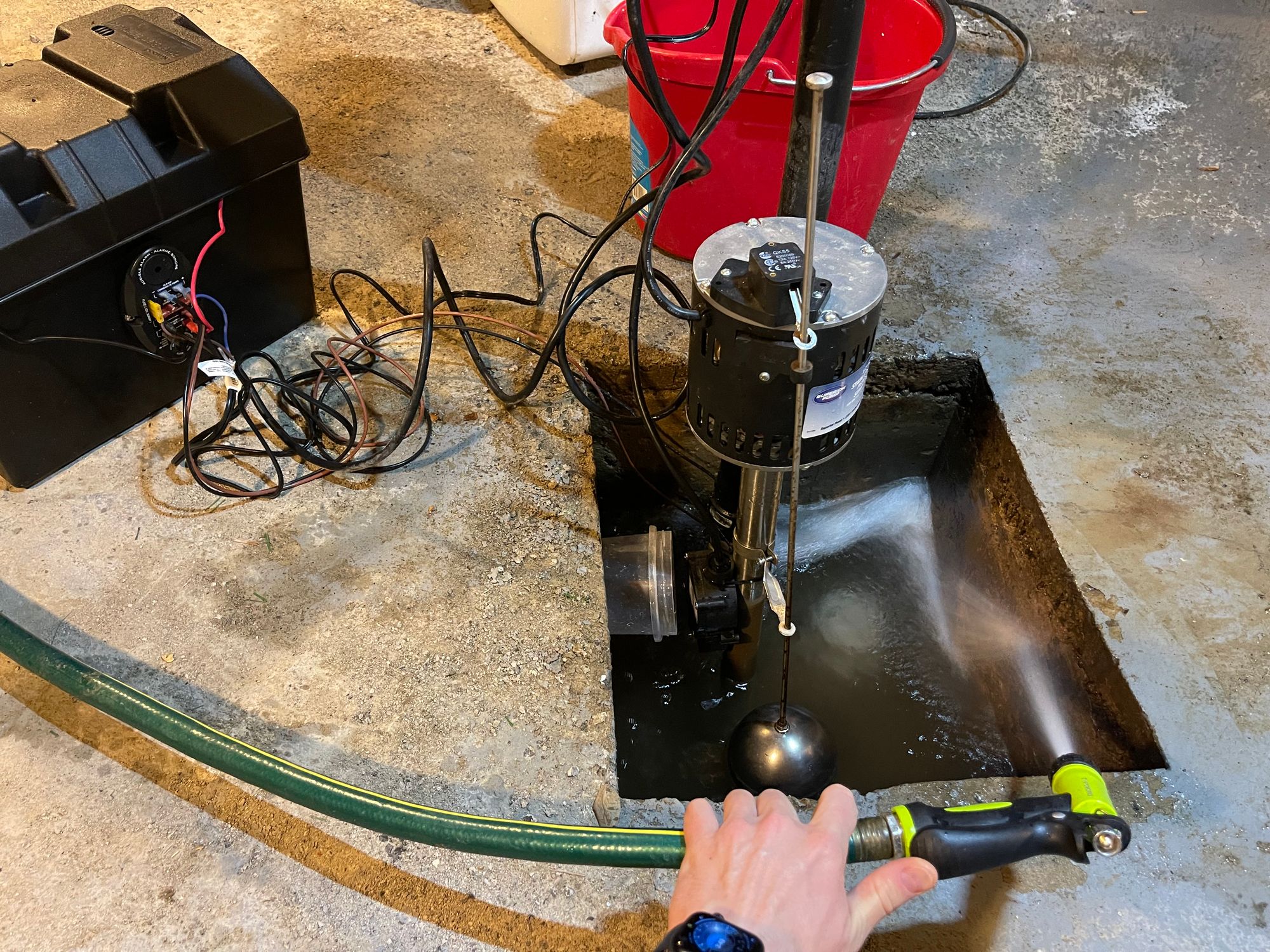
Summary:
I installed a Red Lion backup 12v sump pump system, but I don't feel like the kit was well worth the money. I tried rebuilding my own kit - it's a a work in progress, I will update this page with finding later.
Context:
In the last few years, weather patterns and power grid disruptions have been increasingly erratic, and I didn't want to lose my sump pump when we lose power. Having no prior knowledge on sump pumps and available options, I've documented here my experience with choosing and installing a backup sump pump.
Objectives:
- Approximately 24 hours of safety net should there be a power failure
- Secondary: A backup for mechanical failures of the primary pump are a nice to have, but not an explicit objective for me.
Background:
Our basement has a sump pit that's approximately 2 feet wide, long, and deep, located in the basement crawl space. We already have a primary 115v 1/3HP sump pump, it runs occasionally after rain and has no trouble clearing the water out.
Research:
Having experience with electronics but little to no experience with higher wattage electricity, and no preconceived solution, I started researching possible approaches.
- Water-powered pumps: I ruled out water-powered (no electricity) solutions because we have hard water, which calcifies very quickly.
- Power for the whole house: I looked at installing a back-up power bank for the whole house. It was very expensive (10-50k), though it could also power my fridge and freeze, and could eventually be used with solar panels.
- 115v power banks: I looked at power banks with inverters, but I did not see a significant use case for it.
- 12V backup battery: a 12v ("car" battery) connected to a DC 12V sump pump. This is the approach I went with.
Considerations:
At the time I was familiar only with electronics, and I knew little about larger wattage systems, and sump pumps as a whole. I looked around for different kits, and went with a more reputable brand (Red Lion). At the time it was about $370 at Princess Auto, not including the battery.
For the battery, the pump kit recommends a Group 27 90-100 Ah deep-cycle battery. The instruction manual says lead acid or AGM. The best deal I found was at Costco for a 100 Ah RV lead-acid battery for about $180 with a great return policy. Reddit users strongly advise against using lead-acid batteries in enclosed spaces (they release hydrogen, which is explosive), but many other sources say that it's highly unlikely. I wasn't comfortable with highly-unlikely approach, and found a 110 Ah AGM (sealed) group 31 battery at a local battery dealer (Dixon Batteries) for about twice the price.
Installation:
The kit was fairly easy to install. Instructions were clear, and the most difficult part is building the Wye pipe assembly, which does not come included in the can (another $50 for the piping and check-valve). The manual instructs plugging the primary and secondary pumps on separate circuits without extensions cords, which can be a challenging ask in certain setups.
Outcomes:
The setup works great, the 2500 GPH sump pump does a great job clearing the water when the primary pump is unplugged. I tested it with a much smaller 12v battery I had access to, and then plugged in the group 31 battery that took a few days on the trickle charger to be fully charged.
That said, the key elements of the kit are just the sump pump and switch. The sump pump seems like a generic submerged 12v sump pump. The switch is a diaphragm switch, which was problematic for my installation in two ways. The instructions say that it need 6 to 8 inches of water to be triggered, but it didn't go off until it's submerged a full 8 to 10 inches.

Given the depth of my pit, it meant that either I have to lower the trigger point for my primary point to just a very low level, or have the diaphragm switch be submerged in water. Given that the water around here is fairly hard, and the diaphragm depends on a very small hole for the water to seep in, I worry that it can easily get clogged, which means that the backup pump may not trigger at all when the primary pump fails.
Learnings:
The key pieces I would focus on for a backup sump pump system are the battery ($150-400, not included in kit), charger ($25-60), the pump itself ($50-90), and the switch ($0-150). Whether you buy a kit or not, you will need some plumbing connectors (e.g. Wye and back flow valves). The other elements in the kit can be purchased separately, but are not needed: case for battery ($35), buzzer alarm and LED lights.